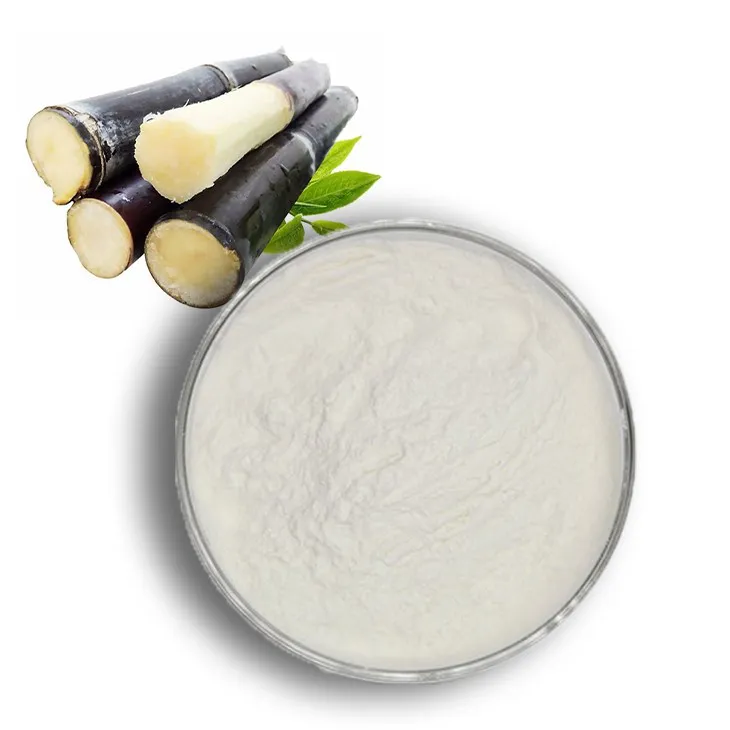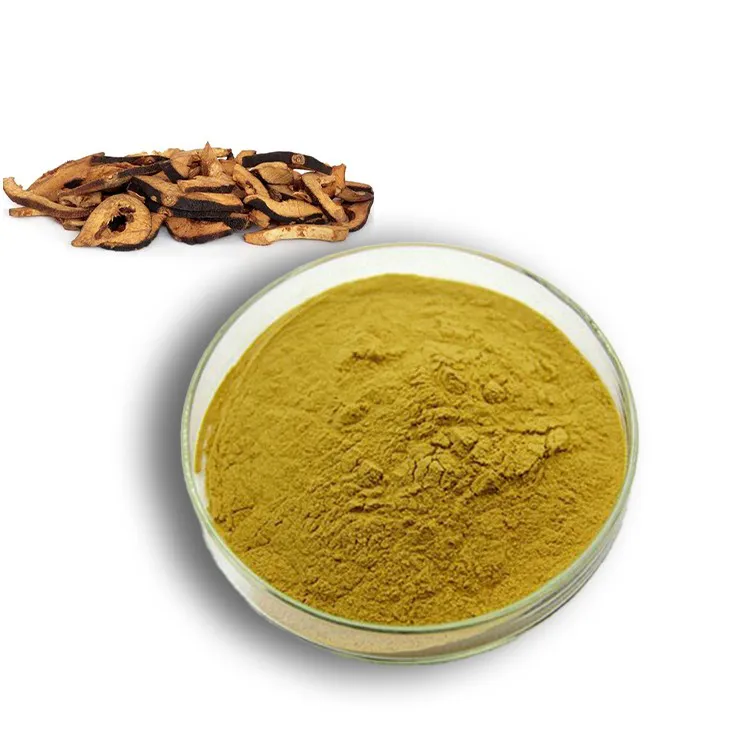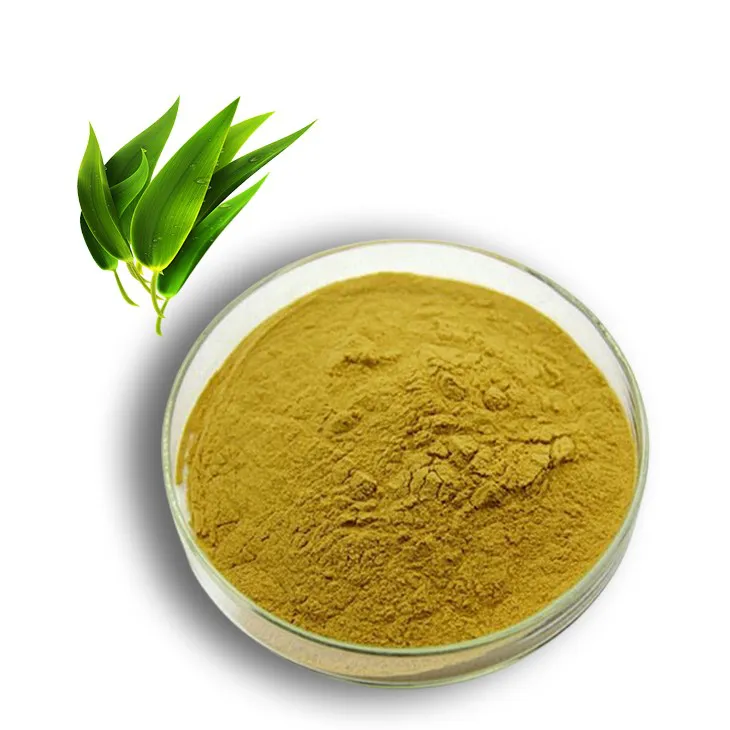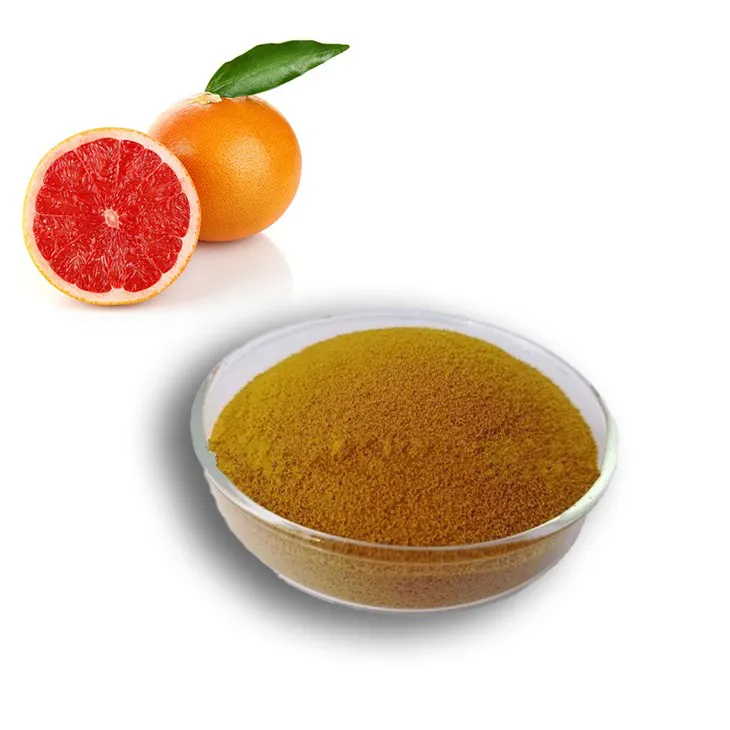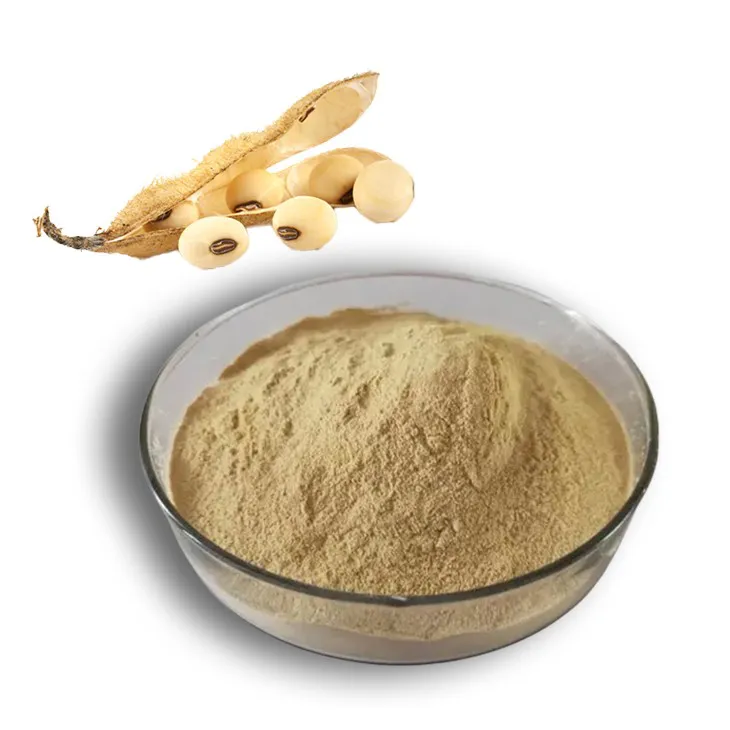- 0086-571-85302990
- sales@greenskybio.com
Bridging Ancient Wisdom and Modern Science: Research on Ayurvedic Plant Extracts
2024-08-13
1. Introduction
Ayurveda, an ancient system of medicine that originated in India thousands of years ago, is based on the concept of maintaining balance in the body, mind, and spirit. Ayurvedic plant extracts have been a cornerstone of this traditional medicine. These extracts are derived from a vast array of plants, each with its own unique set of properties. In recent years, there has been a growing interest in bridging the gap between this ancient wisdom and modern scientific research. This article delves into the world of Ayurvedic plant extracts, exploring how modern science is unlocking their secrets and the potential implications for various fields.
2. The Rich Heritage of Ayurvedic Plants
2.1 Diverse Range of Plants
- Ayurveda utilizes a wide variety of plants. For example, Turmeric (Curcuma longa) is one of the most well - known Ayurvedic plants. It contains Curcumin, a bioactive compound with antioxidant, anti - inflammatory, and antimicrobial properties.
- Ashwagandha (Withania somnifera) is another important plant in Ayurveda. It is often used to reduce stress and improve overall vitality. Ashwagandha contains various alkaloids and steroidal lactones that contribute to its medicinal effects.
- Neem (Azadirachta indica) is highly regarded in Ayurveda for its purifying and healing properties. Neem leaves, bark, and seeds are all used, and they contain compounds such as nimbin and azadirachtin, which have insecticidal, antifungal, and antibacterial activities.
2.2 Traditional Uses
- Traditionally, these plants were used to treat a multitude of ailments. For instance, Ayurvedic practitioners would use turmeric paste to treat skin infections and wounds. The anti - inflammatory properties of Curcumin were harnessed to reduce swelling and promote healing.
- Ashwagandha was commonly prescribed for those suffering from fatigue or anxiety. It was believed to strengthen the body's natural defenses and restore balance to the nervous system.
- Neem was used for oral hygiene, as well as for treating skin diseases like eczema and psoriasis. The bitter compounds in neem were thought to purify the blood and detoxify the body.
3. Modern Scientific Research on Ayurvedic Plant Extracts
3.1 Identification of Bioactive Compounds
- Modern research techniques, such as chromatography and spectroscopy, have enabled scientists to identify and isolate the bioactive compounds in Ayurvedic plant extracts. For example, high - performance liquid chromatography (HPLC) has been used to separate and quantify Curcumin in turmeric extracts.
- Mass spectrometry has been crucial in determining the molecular structure of compounds like those in Ashwagandha. This has allowed for a more in - depth understanding of how these compounds interact with the body's biological systems.
- Nuclear magnetic resonance (NMR) spectroscopy has been employed to study the chemical composition of neem extracts, providing valuable insights into the nature of its bioactive components.
3.2 Understanding the Mechanisms of Action
- Research has shown that curcumin in turmeric inhibits certain inflammatory pathways in the body. It blocks the activation of nuclear factor - kappa B (NF - κB), a protein complex that plays a key role in inflammation. This mechanism explains its anti - inflammatory effects.
- Ashwagandha has been found to modulate the hypothalamic - pituitary - adrenal (HPA) axis, which is involved in the body's stress response. By regulating the HPA axis, Ashwagandha can help reduce stress hormones like cortisol, thereby alleviating stress - related symptoms.
- Neem compounds have been shown to disrupt the cell membranes of fungi and bacteria, leading to their death. This is the basis for its antimicrobial properties.
4. Implications for Drug Discovery
4.1 Potential as New Drug Leads
- The bioactive compounds in Ayurvedic plant extracts offer great potential as leads for new drug development. For example, curcumin's ability to target inflammation has led researchers to explore its use in treating chronic inflammatory diseases such as rheumatoid arthritis. Clinical trials are currently underway to test the efficacy of curcumin - based drugs.
- Ashwagandha's stress - relieving properties have caught the attention of the pharmaceutical industry. Scientists are investigating ways to develop drugs based on its active compounds to treat stress - related disorders like anxiety and depression.
- Neem's antimicrobial compounds could be developed into new antibiotics, especially in the face of increasing antibiotic resistance. These compounds may target bacteria in a different way than traditional antibiotics, potentially overcoming resistance mechanisms.
4.2 Challenges in Drug Development
- One of the main challenges in developing drugs from Ayurvedic plant extracts is the complexity of the extracts. They contain multiple bioactive compounds, and it can be difficult to determine which ones are responsible for the desired therapeutic effects. For example, turmeric extract contains not only curcumin but also other curcuminoids and flavonoids, which may interact with curcumin and affect its activity.
- Another challenge is the standardization of the extracts. Since the composition of plants can vary depending on factors such as growing conditions and harvesting time, it is crucial to develop standardized extraction methods to ensure consistent quality and potency of the extracts. This is essential for drug development and regulatory approval.
- The bioavailability of the compounds is also a concern. Many of the bioactive compounds in Ayurvedic plant extracts have low solubility and poor absorption in the body. For instance, curcumin has limited bioavailability, which has led to the development of various formulations, such as nanoparticles and liposomes, to improve its absorption.
5. Role in Alternative Medicine
5.1 Ayurvedic Medicine in the Modern World
- Ayurvedic plant extracts play a significant role in alternative medicine today. Many people are turning to Ayurveda as a complementary approach to conventional medicine. Ayurvedic products, such as herbal supplements and teas, are widely available in the market.
- These products are often used for general well - being. For example, people may take Ashwagandha supplements to boost their energy levels and improve their mood. Turmeric supplements are popular for their potential anti - inflammatory benefits.
- The holistic approach of Ayurveda, which takes into account the individual's body type (dosha), diet, and lifestyle, is also appealing to those seeking a more personalized form of medicine.
5.2 Evidence - Based Practice
- While Ayurveda has a long history of use, there is a growing need for evidence - based practice. Researchers are conducting clinical trials to evaluate the effectiveness of Ayurvedic plant extracts. For example, studies have been carried out to determine the impact of Ashwagandha on stress - related symptoms in humans. The results of these trials can help to validate the traditional uses of Ayurvedic plants and guide their proper use in alternative medicine.
- However, it is important to note that not all Ayurvedic products on the market are of high quality. There have been concerns about contamination, mislabeling, and the presence of adulterants. Regulatory bodies need to play a more active role in ensuring the safety and quality of Ayurvedic products.
6. Enhancement of Overall Well - being
6.1 Nutritional and Therapeutic Benefits
- Ayurvedic plant extracts can provide both nutritional and therapeutic benefits. For example, many Ayurvedic plants are rich in vitamins, minerals, and antioxidants. Turmeric is a good source of manganese and iron, in addition to its curcumin content. These nutrients are essential for maintaining good health.
- From a therapeutic perspective, the anti - inflammatory, antioxidant, and stress - relieving properties of these extracts can contribute to overall well - being. By reducing inflammation in the body, Ayurvedic plant extracts may help prevent chronic diseases such as heart disease, diabetes, and cancer.
6.2 Lifestyle and Ayurvedic Plants
- Incorporating Ayurvedic plants into one's lifestyle can be beneficial. For example, using neem - based toothpaste can improve oral health. Drinking herbal teas made from Ayurvedic plants like ginger and cardamom can aid digestion and boost the immune system.
- Ayurveda also emphasizes the importance of a balanced diet and lifestyle. By following Ayurvedic principles, such as eating according to one's dosha and practicing regular exercise and relaxation techniques, individuals can enhance their overall well - being in conjunction with the use of Ayurvedic plant extracts.
7. Conclusion
The research on Ayurvedic plant extracts represents a fascinating intersection of ancient wisdom and modern science. These extracts, with their rich history in traditional medicine, are now being explored through advanced scientific techniques. The identification of bioactive compounds and understanding of their mechanisms of action have opened up new possibilities in drug discovery, alternative medicine, and the enhancement of overall well - being. However, challenges such as extract complexity, standardization, and bioavailability need to be overcome in order to fully realize the potential of these plant extracts. By continuing to bridge the gap between Ayurveda and modern science, we can hope to unlock even more of the secrets held within these ancient plants and bring about new and improved health solutions for the future.
FAQ:
What are Ayurvedic plant extracts?
Ayurvedic plant extracts are substances obtained from plants that have been used in Ayurvedic medicine, an ancient traditional medicine system from India. These extracts are believed to possess various medicinal properties due to the presence of bioactive compounds within the plants.
Why is it important to bridge ancient wisdom and modern science in the study of Ayurvedic plant extracts?
Bridging ancient wisdom and modern science is crucial as Ayurvedic plant extracts have a long - standing history in traditional medicine. Modern science can provide evidence - based research methods to unlock the true potential of these extracts. It can help in validating the traditional uses, discovering new applications, and ensuring safety and efficacy for broader use in drug discovery, alternative medicine, and overall well - being.
What are some of the common plants used in Ayurveda for extraction?
There are several common plants used in Ayurveda for extraction. Some examples include turmeric, which is known for its anti - inflammatory properties; neem, which has antimicrobial and antifungal properties; and ashwagandha, often used for stress reduction and enhancing vitality. These plants contain different bioactive compounds that contribute to their medicinal effects.
How can Ayurvedic plant extracts contribute to drug discovery?
Ayurvedic plant extracts can contribute to drug discovery in multiple ways. The bioactive compounds present in these extracts can serve as leads for the development of new drugs. Scientists can study their mechanisms of action, isolate and purify the active components, and then modify them to enhance their potency or reduce side effects. For example, some compounds may have potential in treating diseases like cancer, diabetes, or neurodegenerative disorders.
What role do Ayurvedic plant extracts play in alternative medicine?
In alternative medicine, Ayurvedic plant extracts play a significant role. They offer natural alternatives for treating various ailments. People often turn to these extracts for preventive health care, stress management, and improving general health. For instance, herbal teas made from Ayurvedic plants are popular for their soothing and health - promoting effects. They can also be used in the form of supplements, oils, or poultices.
Related literature
- Ayurvedic Medicinal Plants: A Review of Their Traditional Uses, Phytochemistry, and Pharmacology"
- "Modern Scientific Perspectives on Ayurvedic Herbal Remedies"
- "Unraveling the Mysterious World of Ayurvedic Plant Extracts: A Scientific Approach"
- ▶ Hesperidin
- ▶ citrus bioflavonoids
- ▶ plant extract
- ▶ lycopene
- ▶ Diosmin
- ▶ Grape seed extract
- ▶ Sea buckthorn Juice Powder
- ▶ Beetroot powder
- ▶ Hops Extract
- ▶ Artichoke Extract
- ▶ Reishi mushroom extract
- ▶ Astaxanthin
- ▶ Green Tea Extract
- ▶ Curcumin Extract
- ▶ Horse Chestnut Extract
- ▶ Other Problems
- ▶ Boswellia Serrata Extract
- ▶ Resveratrol Extract
- ▶ Marigold Extract
- ▶ Grape Leaf Extract
- ▶ blog3
- ▶ Aminolevulinic acid
- ▶ Cranberry Extract
- ▶ Red Yeast Rice
- ▶ Red Wine Extract
-
Sugarcane Extract
2024-08-13
-
Epimedium extract powder
2024-08-13
-
Citrus Aurantii Extract
2024-08-13
-
Curcumin
2024-08-13
-
Astaxanthin
2024-08-13
-
Moringa powder
2024-08-13
-
Bamboo Leaf extract
2024-08-13
-
Lemon Extract
2024-08-13
-
Grapefruit Seed Extract Powder
2024-08-13
-
Soy Extract
2024-08-13











